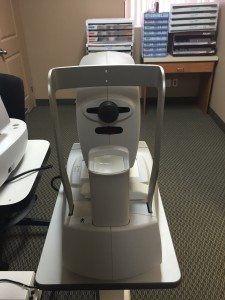
How Vision Changes as We Age – Part Two
In a previous post, we discussed how, as we age, our eyes become subject to conditions such as farsightedness and cataracts. Here’s how vision changes as we age, part two, where we examine how aging can affect our eyes in other ways.
How Aging Affects Other Eye Structures
Many subtle changes in our vision and eye structures happen as we grow older. Some of these changes include:
- Reduced pupil size – The muscles that control the size of our pupil and its reactions to light lose some strength as we age. The pupil becomes smaller and less responsive to changes in ambient light. This means that people in their 60s need three times more ambient light for comfortable reading than they did in their 20s. Seniors are more likely to be overwhelmed by bright sunlight and glare when leaving dimly lit buildings like movie theatres. Glasses with anti-reflective coating and photochromic lenses can help to relieve this problem.
- Dry Eyes – Our eyes produce fewer tears as we age. Post-menopausal women are particularly prone to this condition. Artificial tears can help to relieve the burning, stinging and other symptoms related to dry eyes. Alternately, an eye doctor can give you a prescription for a dry eye medication.
- Loss of peripheral vision - Loss of peripheral vision is a normal result of aging. The size of our field of vision decreases by about one to three degrees per decade of life. You may experience a peripheral field of vision loss of 20 to 30 degrees by the time you reach your 70s and 80s. Car accidents are more likely to happen at this time, so be sure to be more vigilant when driving. For example, if you experience a loss of peripheral vision, you will need to turn your head and look both ways when approaching intersections.
- Decreased color vision – Cells in the retina responsible for normal colour vision weaken as we age, causing colours to become less bright and the contrast between different colours to become less noticeable. Blue, in particular, may look faded or washed out. Unfortunately, there is no treatment for this condition and it could be particularly troublesome for those whose professions depend on accurately distinguishing between colours.
- Vitreous detachment – The gel-like vitreous inside the eye begins to liquefy and pull away from the retina as we age, causing spots and floaters and sometimes flashes of light. This condition is usually harmless; however, floaters and flashes of light can also signal the beginning of a detached retina, which is a serious problem that can cause blindness if left untreated. If you experience floaters and flashes of light, see your eye doctor right away.
Despite the inevitable age-related vision changes, it is possible to preserve healthy eyes for a lifetime.

